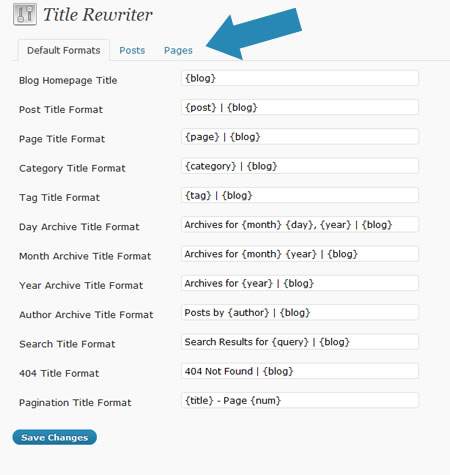The power of a good title can make or break subsequent SEO efforts. With millions of pages being added each day, user agents *a.k.a web crawlers or search engine spiders have their hands full keeping tabs on what’s hot and what’s not. To increase rankings and relevance, you should SEO your title tags on each page in your website for optimal meaning and context for the pages respective content.
This is one more reason that you don’t want to leave it up to them to determine what the topicality of your pages are really about. If you use the main keywords in “exact match” first in the title, this indicates to them through a hierarchical method called proximity, that these keywords “in this order” are more important than those that follow.
Also consider, the more keywords you add to the title, the less effective or diffused each one becomes as it is interpreted as a mixed signal or relevance.
This means that less is more when it comes to titles. You are better off creating addition keyword-specific pages and using exact match titles to summarize what that piece of the semantic puzzle means and how it fits into your website, than stuff the keyword full or irrelevant keywords that sparsely appear on the page.
If you consider the web from a top down approach, you will find that term frequency, title tags, co-citation from other websites and the websites internal site architecture are responsible for providing cues of topicality.
A great title and enough links from authoritative sites that are also theme-specific is one sure-fire ranking tactic from most SEO’s playbooks. However, in order for a title to be effective, it should be based on a solid premise of contextual information you would expect to find ON THAT PAGE.
This also means selecting which pages have the highest degree of relevance within a website and creating a structured taxonomy of tags and / or links to serve as indicators of ideal destinations. As a result, there is a clear definitive page assigned to each specific keyword, but also serves to produce relevance for different layers of the user experience and indexing for search engines.
This premise is known as theming and siloing and is a very effective tactic to use for creating content-rich articles or pages, then passing that link flow and ranking power to landing pages closer to the root folder (where the tendency to rise is more prominent).
In other words, you may create a category called search engine optimization, then within it discuss keywords, title tags, internal links, optimization tips, link building etc. Then, somewhere on each page you link the keyword “search engine optimization” since it is the topic (and should appear as a reference “on each page” to a specific landing page called “search-engine-optimization” to funnel link flow and ranking power from each of the subsequent pages to the ideal preferred landing page.
Also, the closer those subsequent pages are to being semantically relevant for their main keywords, the more link flow/ranking power they can pass along. Think of SEO as a daisy chain of scalable referential proportions. Each page passes along its vote to other pages for the keywords the target page is optimized for.
Simultaneously, the page being linked from is also receiving link flow and relevance from other themed pages based on the occurrence of the “targeted keyword” as it appears in the context of conversation in the body copy.
Wikipedia has mastered this fundamental formula and has more top 3 rankings than any other website online. If you can mirror a fraction of this type of taxonomy and site architecture for your group of semantic clusters and keywords, there are very few websites who can challenge or stop your ascent as you dial in the on page and off page metrics that produce authoritative rankings.
From theory to practice:
For those of your running WordPress as a CMS (content management system) or blog, the possibilities are immense. SEO Design Solutions is proud to offer a new upgrade to our SEO Ultimate WordPress Plugin which features a mass title rewriting function from one central dashboard.
Now you can literally optimize all of your titles for pages or posts from one easy-to-use interface. This feature allows you to fine tune the most powerful metric “the title tag” to capture a broader array of targeted keyword driven traffic. For more information about SEO Ultimate or to download it, visit our plugin information page.
Suggested Reading:
- How to Use Consistent Naming Conventions to Increase Relevance
- SEO Basics: Techniques for Optimizing Titles and tags
- Catchy Titles have Higher Click Through Rates
- The Power of SEO Friendly Titles
- Optimizing Title Tags and Descriptions











I understand the concept of linking from pages to other pages to improve rankings, but should this always be done from the content of a page? For example if you have a category called “search engine optimization” and within it have a “link building” page, should that “link building page” link back up the “search engine optimization” category/silo from within the content, or would site navigation or breadcrumbs achieve the same effect anyway?
Justin:
Better to link contextually as opposed to just relying on breadcrumbs. Proximity and prominence play a big role in the value a link is assigned. Also, where the link appears matters since the block it occupies has a unique scoring method. Header (typically minimized) due to navigation, sidebars and footers, also devalued. Hence, the body area plays a significant factor in the relevance of that keyword.
So, if you can, always use the content or even alt attributes to overlap with breadcrumbs and / or deep links from other sites. Its the aggregate value of ranking factors that make up for why someone ranks on page 3 or page 1 in the end. Thanks for visiting…